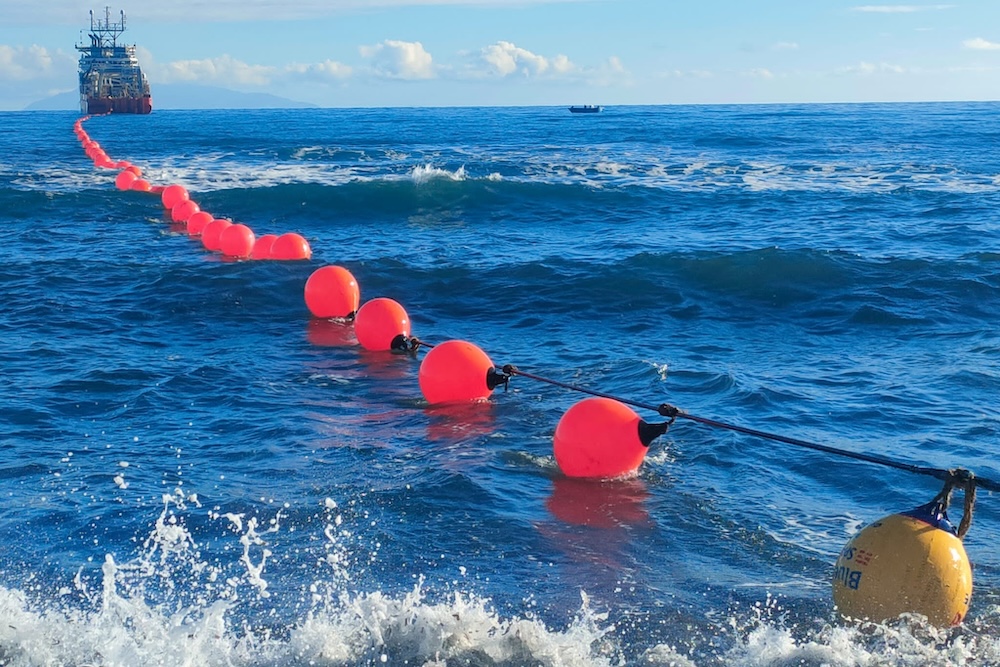The industry groups issue a joint statement to warn Europe that ageing fleets, regulatory delays and skills shortages could cripple repair efforts when subsea cable resilience is most needed
Europe’s digital and energy lifelines are facing an unseen but mounting crisis beneath the waves. The European Subsea Cables Association (ESCA) and the International Marine Contractors Association (IMCA) have jointly warned that the EU’s ability to respond effectively to subsea cable outages is being undermined by regulatory barriers, ageing infrastructure and a lack of skilled offshore workers. Their intervention follows the relatively recent launch of the EU Cable Security Action Plan – the framework intended to reinforce the resilience of Europe’s critical subsea networks.
Subsea cables carry 95-99% of intercontinental data traffic and play an increasingly pivotal role in energy flows, interconnecting national grids and transmitting renewable power from offshore generation. As their joint statement underscores, timely repair is not merely a technical necessity but a matter of economic stability and security. Damage caused by fishing, anchoring, natural hazards or interference can instantly reverberate across financial systems, telecoms and energy markets.
Stephen Dawe, chairman of ESCA, stressed the need for governmental response to align with industry readiness. “Subsea cables are the invisible infrastructure of modern Europe… governments and regulators must work with the industry to ensure that policy and legislation are not blockers to being able to fix subsea cables quickly when faults occur.”
Iain Grainger, chief executive of IMCA, echoed this sentiment, warning that: “without coordinated investment and strategic support, there is a danger that capacity gaps will emerge at precisely the moment when we can least afford them.”
Telecoms versus power cables
Repair ecosystems for telecoms and power cables diverge dramatically. Telecoms at least benefits from mature, global maintenance agreements such as the Atlantic Cable Maintenance Agreement and the Mediterranean Cable Maintenance Agreement, enabling parts, vessels and personnel to be pooled and mobilised swiftly. However, the repair fleet is ageing and investment for renewal remains uncertain, while licensing regimes vary across the EU, potentially delaying mobilisation.
Power cables – used in offshore wind and interconnectors – are heavier, technically more demanding and lack a coherent, continent-wide maintenance framework. Repair-capable vessels are frequently tied up in installation projects, and cross-border permitting delays can result in prolonged service interruptions.
Investment, skills and policy reform
ESCA and IMCA have called for a threefold approach to strengthen resilience: public-private investment to modernise repair fleets and stockpile spares; workforce development programmes to train deck officers, cable engineers and jointing experts; and policy reform, including fast-track permitting or pre-approvals for emergency repairs across EU member states.
UK concerns voiced as well
Across the Channel, the UK has initiated its own scrutiny of subsea resilience. On 9 June 2025, the Joint Committee on the National Security Strategy (JCNSS) examined the UK’s preparedness to confront disruptions to undersea cables. During oral evidence sessions, officials including representatives from ESCA and ACMA were questioned about national readiness and repair capacity.
A central focus was the concentration of transatlantic cable landings at Bude in Cornwall, identified by committee members as a strategic vulnerability that, if compromised, could severely affect UK data traffic. According to New Civil Engineer, two of the 12 subsea cables connecting Britain to North America carry 75% of total transatlantic data connectivity for Britain, and both cables share the same landfall location at Bude.
The CSRI report on undersea cable threats reinforced the urgency of this issue. It warned that of the 10 incidents where a suspect vessel was identified between January 2021 and April 2025, eight were linked to China or Russia through registry or ownership. Moreover, the UK government acknowledged limited maritime monitoring, noting that coastal radar covers only about 22% of its exclusive economic zone.
Regarding RFA Proteus, the UK’s new Multi-Role Ocean Surveillance Ship (MROS), the report noted that it possesses some repair capability but also highlighted ongoing delays in commissioning and operating readiness. The committee also discussed emerging technologies such as distributed acoustic sensing (DAS), which can detect seabed activity via live fibre cables – offering near real-time awareness without involving naval vessels.
A strategic test for Europe
The warnings issued by ESCA and IMCA place both the EU and UK at a strategic turning point – just like other big transatlantic turning points. The EU’s Action Plan shows institutional recognition of subsea infrastructure’s criticality, but without close engagement with the repair sector, worthwhile intent risks being overtaken by crisis.
The UK’s JCNSS inquiry, with its focus on geographic concentration at Bude, surveillance gaps, delayed vessel readiness and emerging technologies, provides a potential blueprint that Europe could scrutinise.
As reliance on subsea networks continues – even as the threats grow – resilience must be elevated from technical detail to national security focus. As ESCA and IMCA aptly put it: these are “the invisible lifelines of the modern world,” and their integrity must be visible at the heart of strategic policymaking.
